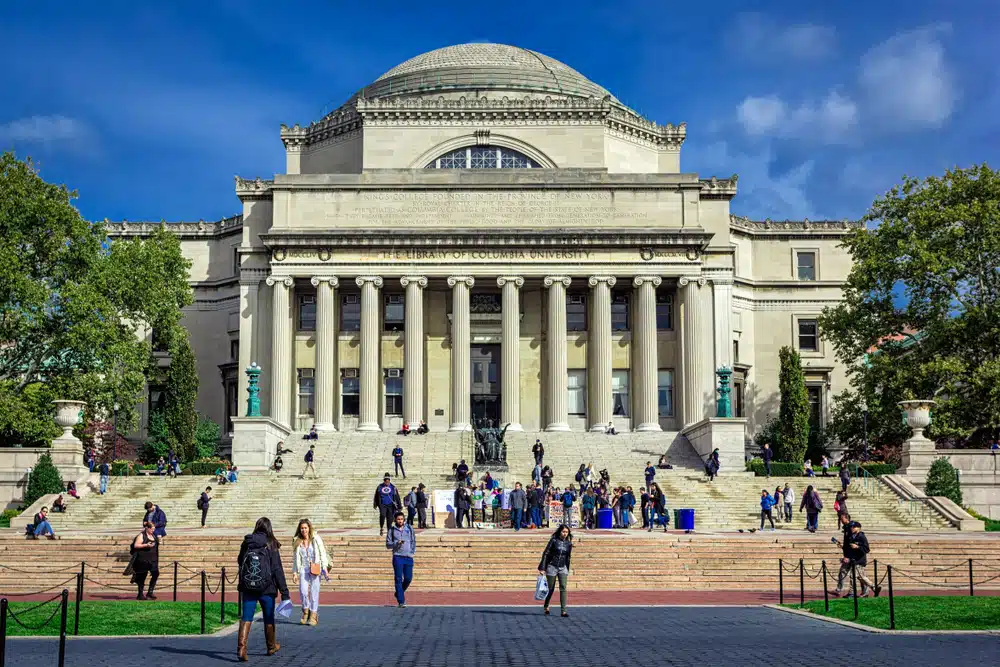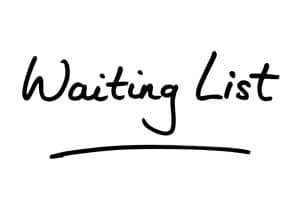What Does It Mean to Be Placed on the Columbia Waitlist for 2025?
As the spring season unfolds, college admissions decisions also begin to take shape. While some students are receiving acceptance and rejection letters, others find themselves placed on waitlists. This article explores the meaning of being placed on the Columbia University waitlist for the year 2025, a situation that leaves many students with questions and uncertainty. If you’re one of them, read on to gain insights and guidance to navigate this process better.
Understanding the Concept of College Waitlists
A college waitlist is a purgatory-like state that offers neither an outright acceptance nor a direct rejection. It’s an intermediary step where colleges put the applicants they deem as overflows or back-ups. These are the students the college might admit if places become available.
When a student receives a waitlist decision, it can be both frustrating and hopeful. On one hand, it means that the college found the applicant’s credentials impressive enough to consider them for admission. On the other hand, it leaves the student in a state of uncertainty, as they have to wait for further updates.
While being on a waitlist doesn’t guarantee admission, it implies that the student’s application was solid enough to warrant consideration. It’s important for waitlisted students to understand the process and be prepared for potential outcomes.
The Basics of College Waitlists
Most times, colleges and universities offer more acceptance letters than they have available spots. They do this knowing that not all admitted students will accept the offer. This is where the waitlist comes into play. When the number of accepted offers doesn’t meet the intake capacity, colleges reach out to the waitlisted students to fill the vacancies.
Colleges carefully manage their waitlists, considering factors such as the number of students who decline their offers, the projected yield rate, and the desired class size. This ensures that they have a pool of qualified applicants to choose from if spots become available.
For students on the waitlist, it’s important to understand that the chances of being admitted vary from college to college and from year to year. Some colleges may admit a significant number of students from the waitlist, while others may admit only a few or none at all. It’s a complex process influenced by various factors, such as the number of students who accept offers of admission and the overall competitiveness of the applicant pool.
How Waitlists Differ from College to College
Each institution’s waitlist works differently; they have different practices and policies about communicating with waitlisted students, making offers, and timelines. It’s crucial for the waitlisted student to research their specific university’s process to avoid any misunderstanding or missteps during this period.
Some colleges may require waitlisted students to confirm their interest in remaining on the waitlist, while others may automatically consider all waitlisted applicants. Additionally, colleges may have different priorities when admitting students from the waitlist. Some may prioritize students who demonstrate a strong interest in attending, while others may focus on specific academic or demographic factors.
Waitlisted students should also be aware of the timelines involved. Colleges typically have a deadline by which they will notify waitlisted students of their final decision. It’s important for students to be prepared to make a decision promptly if they receive an offer of admission from the waitlist.
Overall, understanding the concept of college waitlists involves recognizing that it is a dynamic and unpredictable process. While it can be a challenging waiting period, it’s essential for students to stay informed, maintain a positive attitude, and explore other options in case the waitlist does not result in an offer of admission.
The Specifics of Columbia University’s Waitlist
Let’s now delve into Columbia University’s waitlist process, starting with how they select students to be put on this list, and the probable timeline for responses from the university.
The Selection Process for Columbia’s Waitlist
The waitlist selection aligns with Columbia’s overall admission process, emphasizing a holistic review that considers academic performance, personal character, and extracurricular activities, among other aspects. When evaluating applications for the waitlist, the admission committee carefully examines each candidate’s academic achievements, looking for evidence of intellectual curiosity, strong analytical skills, and a passion for learning.
In addition to academic performance, Columbia University values personal character and the impact an applicant may have on the campus community. The admission committee looks for individuals who have demonstrated leadership potential, a commitment to service, and a willingness to contribute to the university’s diverse and vibrant student body.
Extracurricular activities also play a significant role in the waitlist selection process. Columbia University seeks students who have pursued their interests outside of the classroom, whether it be through participation in sports, involvement in community service organizations, or engagement in the arts. These activities provide valuable insights into an applicant’s passions, talents, and ability to balance various commitments.
Ultimately, if the admission committee finds an application admirable but currently lacks space in the incoming class, the applicant may be placed on the waitlist. This means that the candidate is considered a strong contender for admission, but the university needs to assess the enrollment numbers and make final decisions before extending an offer.
The Timeline for Columbia’s Waitlist
While timelines can vary each year, students on Columbia’s waitlist usually start receiving admission offers anywhere from mid-May to late July. This period is after the initial acceptance period ends, and the university has a clearer view of its enrollment numbers.
During this time, the admission committee carefully evaluates the number of students who have accepted their offers of admission and determines if there is still space available in the incoming class. They consider factors such as the number of students who have declined their offers, the yield rate from the regular decision pool, and the overall capacity of the university.
Once the admission committee has a better understanding of the enrollment landscape, they begin to extend admission offers to students on the waitlist. These offers are typically made on a rolling basis, meaning that as spaces become available, the university reaches out to waitlisted candidates with an opportunity to join the incoming class.
It’s important to note that being on the waitlist does not guarantee admission to Columbia University. The number of students admitted from the waitlist can vary each year depending on the university’s needs and the overall response rate from the initial pool of admitted students. However, being on the waitlist is still a positive outcome and an indication that the applicant is highly regarded by the admission committee.
For students who find themselves on Columbia’s waitlist, it is essential to remain patient and keep their options open. It is advisable to accept offers of admission from other universities while waiting for a decision from Columbia. This ensures that students have a backup plan in case they are not ultimately admitted from the waitlist.
Overall, Columbia University’s waitlist process is designed to give deserving applicants a chance to be considered for admission, even if there are space constraints. The university carefully evaluates each candidate’s qualifications and makes decisions based on the needs of the incoming class. While the waitlist can be a period of uncertainty, it is also an opportunity for students to demonstrate their continued interest in attending Columbia and to showcase any new achievements or developments that may strengthen their application.
What Being on Columbia’s Waitlist Means for You
The implications of being on Columbia’s waitlist come in different forms. It can be an opportunity for hope or a cause for stress and confusion. Knowing how to interpret this status can offer some reassurance.
Interpreting Your Waitlist Status
Being placed on the Columbia waitlist implies you met their competitive admission standards and are considered a qualified candidate. It means the admission committee found your application impressive, yet due to space constraints; they currently cannot offer admission. Always remember that being on a waitlist is not a rejection – it’s a position of potential opportunity.
When you receive the news that you have been waitlisted, it can be a mix of emotions. On one hand, you may feel relieved that your application was not outright rejected. On the other hand, there may be a sense of uncertainty and anxiety about what lies ahead. It’s important to keep in mind that being waitlisted means that the admissions committee sees potential in you and believes you could be a good fit for their institution.
While waiting for a final decision, it’s natural to have questions about what you can do to improve your chances of being accepted. One approach is to reach out to the admissions office and express your continued interest in attending Columbia. This shows your dedication and enthusiasm for the school. Additionally, you may want to consider submitting any new information that could strengthen your application, such as updated grades or achievements.
The Implications of Being Waitlisted
While it’s somewhat comforting knowing that Columbia has not rejected you, it’s important to understand the implications of the waitlist. The admission isn’t guaranteed, and the waiting period can induce anxiety and concern. It’s also a good idea to have alternative plans if the waitlist does not resolve favorably.
Waiting for a decision can be a challenging time, as you may be torn between holding out hope for acceptance and making concrete plans for your future. It’s crucial to remember that being on the waitlist means that you are still being considered for admission, but it is not a guarantee. It’s essential to have a backup plan in case you are not ultimately accepted.
During this waiting period, it’s important to stay positive and focused. Take the time to explore other universities or colleges that interest you and consider their programs, campus culture, and opportunities. Researching and visiting other institutions can help you make an informed decision if you need to pivot your plans.
Furthermore, it can be beneficial to connect with current or former students who have been through the waitlist process. They can provide valuable insights and advice on how to navigate this uncertain time. Remember, you are not alone in this experience, and there are resources available to support you.
Ultimately, being on Columbia’s waitlist means that you still have a chance to be part of their esteemed community. While the waiting period can be challenging, it’s important to remain hopeful and proactive. Use this time to explore your options, strengthen your application if possible, and prepare for whatever outcome may come.
Navigating the Waitlist Process at Columbia
Once you’re on the waitlist at Columbia University, you may find yourself wondering what steps you can take to increase your chances of admission or, at the very least, navigate the process more confidently. While being on the waitlist can be a bit uncertain, there are strategies you can employ to make the most of this opportunity.
One of the first steps to take after being waitlisted is to confirm your interest in Columbia by accepting your place on the waitlist. This simple act shows the admissions committee that you are still interested in attending the university and are willing to wait for a potential spot to open up. Additionally, you could consider sending an update regarding any new accomplishments that have occurred after the application submission. This could include recent awards, achievements, or even notable experiences that further highlight your qualifications and commitment to your academic pursuits.
It is important to remember that while you should be proactive in your approach, you should also avoid pestering the admissions office. They receive numerous inquiries and updates from waitlisted students, so it is crucial to strike a balance between showing your continued interest and respecting their time and resources.
Communicating with Columbia’s Admissions Office
Before reaching out to the admissions office, it is essential to carefully read all the information and instructions Columbia has sent you regarding the waitlist process. Familiarize yourself with any specific guidelines they have provided, as this will help you tailor your communication accordingly.
If you do choose to communicate with the admissions office, it is crucial to maintain a professional and polite tone. Remember that the admissions officers are busy individuals who are working diligently to review applications and make decisions. Keep your message concise and to the point, highlighting any relevant updates or information you believe may strengthen your candidacy. Additionally, always remember to express gratitude and thank them for their time and consideration.
While it is natural to feel anxious or uncertain while on the waitlist, it is important to approach the process with a positive mindset. Use this time to continue pursuing your academic and personal goals, as your dedication and growth can only enhance your application. Remember that the admissions committee saw potential in you when they placed you on the waitlist, and by taking these proactive steps, you are demonstrating your commitment and enthusiasm for joining the Columbia community.
Alternatives and Options for Waitlisted Students
Getting waitlisted doesn’t have to equate to a total stagnation of your plans. Several alternatives could be explored while waiting to hear back from Columbia.
Considering Other College Offers
Being waitlisted at one university doesn’t diminish your chances at other institutions. Consider any other offers of admission you may have received as valid alternatives, even as you hope for a positive outcome at Columbia.
Exploring Gap Year Opportunities
Another route is considering a gap year. You can use this time effectively for personal growth or to boost your college application for the next year. It could involve working, interning, volunteering, or even traveling, should circumstances permit.
In conclusion, being on the Columbia waitlist for 2025 is not a stop sign. It’s instead a pause to reconnoiter your options, prepare for multiple outcomes, and persevere in the pursuit of your academic goals.
How AdmissionSight Can Help You With College Admissions
AdmissionSight is a college consulting firm that provides personalized assistance to students throughout the college admissions process. Here are some ways that AdmissionSight can help you:
Admissions strategy: AdmissionSight can help you develop a strategic plan for your college application process. Our professional consultants can assist with identifying schools that are a good fit for your academic, extracurricular, and personal goals and help you plan and prioritize your application strategy.
Application review: AdmissionSight can review your application and provide feedback on how to improve it. We can offer suggestions on making your application stand out and highlighting your strengths and unique qualities.
Essay coaching: AdmissionSight can help you craft compelling essays that showcase your personality, goals, and achievements. We can guide you through the essay writing process and provide feedback on your drafts to help you refine your writing.
Interview preparation: AdmissionSight can provide interview coaching to help you feel confident and prepared for college interviews. Our experts can offer tips on how to present yourself professionally and how to answer common interview questions.
Extracurricular planning: AdmissionSight can help you plan and develop your extracurricular activities to make them more impactful and meaningful. We can suggest activities that align with your interests and goals and provide guidance on demonstrating your leadership and initiative.
Overall, AdmissionSight can provide valuable guidance and support throughout the college admissions process to help you maximize your chances of getting accepted into the college of your choice.
With a high success rate of over 75%, we have built a strong network in the past decade. Book an initial consultation today, free of charge!









































